4ms Pingable Envelope Generator Handleiding
4ms
Niet gecategoriseerd
Pingable Envelope Generator
Bekijk gratis de handleiding van 4ms Pingable Envelope Generator (34 pagina’s), behorend tot de categorie Niet gecategoriseerd. Deze gids werd als nuttig beoordeeld door 19 mensen en kreeg gemiddeld 4.9 sterren uit 10 reviews. Heb je een vraag over 4ms Pingable Envelope Generator of wil je andere gebruikers van dit product iets vragen? Stel een vraag
Pagina 1/34

4ms Pingable Envelope Generator
Eurorack Module User Manual v2015-06-15
Firmware v4.3 / PCB v2.0
The Pingable Envelope Generator (PEG) from 4ms Company is a dual envelope generator whose envelope
lengths are set by the time between clock pulses or “pings”. The PEG has full CV control of envelope shape, skew,
and ping (clock) division/multiplication, as well as a plethora of triggering and cycling options (AD, AR, quantization,
cycle, cycle toggle), and a tap tempo button for each channel.
DOWNLOAD MOST RECENT MANUAL AT:
http://4mspedals.com/peg.php

Features
• Basics:
• Dual “pingable” envelope generator – total envelope time is set by time between pulses ("ping")
• Tap tempo button or external clock/triggers sets the ping time
• Two taps sets the tempo. If a third tap is given close to the tempo to the first two taps, the two timing periods
will be averaged
• Envelope time is a multiple or division of the ping clock (from /8 to x8) set by Ping Div/Mult knob and CV
• Curve knob and CV control the shape of the output envelope. Various combinations of exponential, linear,
logarithmic, and interpolated curves, separately for rise and fall portions
• Skew knob and CV control the ratio between rise and fall times without changing total envelope time.
• Fastest rise time=10µs, fastest fall time=100µs. Slowest rise/fall time=15 min (30 min total)
• Envelope is triggered by Quantized trigger jack, Asynchronous trigger jack, and/or Cycle mode
• Outputs and scaling/shifting:
• Scale knob is an attenuating inverter for main envelope output
• Maximum 0V to +10V non-inverted
• Minimum -10V to 0V inverted
• Bi-polar button centers main envelope output around 0V (-5V to +5V output)
• “+5V ENV” jack is a non-scaling output that always produces a 0V to +5V envelope
• “OR” jack outputs an analog OR mix of the two channels' scaled envelope curves
• Gate/Trigger outputs:
• End-of-Rise (EOR) gate output goes high when envelope finishes a rise portion, and goes low when envelope
begins a rise portion. Optional trigger mode
• End-of-Fall (EOF) gate output goes high when envelope finishes a fall portion, and goes low when envelope
begins a fall portion. Optional trigger mode
• Half-R (Half-Rise) gate outputs 90-degree phase shifted gates that go high when 50% of the of the rise time
portion has elapsed, and goes low after 50% of the of the fall portion (this is different than a voltage time
comparator-based design). Optional trigger mode
• Tap Clock Output: (enabled in System Edit Mode) dedicated Tap Tempo clock output (gate or trigger)
• Triggering/cycling:
• Cycle button for each channel makes envelope self-cycle (LFO mode). Button lights up when on
• “T” jack toggles the state of both channels' Cycle buttons while a gate is applied
• “QNT” jack for each channel triggers an envelope to start at the next quantized beat, with respect to the
divided/multiplied ping clock. Holding a gate high on this jack causes the envelope to repeat.
• “Async” jack for each channel causes an envelope to output immediately (asynchronously). Holding a gate high
results in an AR envelope (rise-sustain-fall). A trigger on Async jack enters Async mode, where the envelope is
no longer phase-locked to the ping clock. A trigger on QNT exits Async mode and enters Sync mode.
• CV input jacks:
• CV control of each channel's Ping Div/Mult, Skew, and Curve using the CV jacks.
• Respective knobs set the center offset for the applied CV
• CV of 0-10V will modulate the parameter's full range – however, a 0-5V CV will modulate the parameter within
a useful range.
• System Mode:
• Special mode to change advanced parameters
• Re-assign the Half-Rise jack to EOR (and vice-versa)
• Re-assign the EOF jack to Tap Tempo Clock output
• Select Gate or Trigger output from EOR/EOF/Half-R jacks
• Require a continuous external ping clock (unit will not free-run if external ping clock stops)
• Enable/disable skew limiting that keeps fastest rise/fall times at 6ms
Dimensions
• 20 HP Eurorack format module
• 1.6” (40mm) deep
Power consumption
+12V rail:
60mA max with 5V Source jumper selecting external 5V
105mA max with 5V Source jumper selecting internal 5V
+5V rail:
40mA max with 5V Source jumper selecting external 5V
not used with 5V Source jumper selecting internal 5V
-12V rail:
35mA max
Page 2

Your first P.E.G. Patch: a Basic Walkthrough
Step 1: Prepare the PEG
• Unplug all cables from the PEG, turn the Div/Mult, Skew, and Curve knobs to center (12 o'clock), turn Scale all the
way up, and make sure the Cycle and Bi-polar are off (not lit up). Plug the "ENV" jack on the red channel into
something you want to modulate — perhaps a filter, or the pitch of an oscillator.
Step 2: Set your Ping time
Before the PEG can generate an envelope, you need to supply a Ping time. The Ping time is the basic reference that
determines the timing of the envelope.
• Tap the red channel Ping button two or three times, about a second between taps. It's easier to see what's going on
with a slow envelope. The white Ping button should be flashing at the tempo you tapped. If you gave a third tap, the
time between the taps will be averaged (unless the third tap occurs more than 50% different than the timing period of
the first two taps)
• You also could run an external clock into the red Ping jack (when a gate is received on the Ping jack, the internal tap
tempo clock is stopped).
Step 3: Provide a trigger source
Like any envelope module, the PEG will produce an envelope when it receives a trigger. Also, like many
envelope modules, it can be set to self-trigger so that it'll cycle without any external trigger.
• Press the red channel Cycle button (it will light up green). Notice the white LED above the
ENV jack starts flashing. The envelope is now running freely, in time with the ping clock.
Adjust the other module(s) you are running the PEG into so you can hear the modulation.
• You also could turn Cycle off and run a manual trigger into the QNT or Async jack (e.g. try
the Gate output from a Pressure Points, or perhaps a slow clock output from an RCD/SCM)
Step 4: Adjust your output level
• Adjust the Scale knob and/or play with the Bi-polar button to get a good voltage range that works well
with whatever you're modulating with the PEG.
That's the basic PEG patch: Ping, Trigger, and Output. Now we can play with the parameters of the envelope.
Step 5: Set up your Division/Multiplication amount
• Turn the Ping Div/Mult knob to various settings and watch the Ping button flash faster and slower. Notice
how the tempo doesn't change gradually, but instead jumps from speed to speed. This is because each
speed is an integer multiple or division of the original tempo (e.g. three times as fast, or half as slow). You
also can modulate this parameter with the Div CV jack at the bottom.
Step 6: Adjust Skew and Curve
• Fiddle with the Skew and Curve knobs to get an envelope shape you like. Notice the curve
shapes in the center section of the knob are all symmetrical (same rise and fall shape), while
the shapes at the start and end of the knob's range are asymmetrical (different curves for rise
and fall). Of course, you can modulate these parameters with the CV jacks at the bottom.
Step 7: Play with it! Try triggering the blue channel with the red channel
• Now plug the red EOF (end-of-fall) jack into the blue Ping jack. Turn the blue channel Cycle button On. Run the blue
channel "ENV" jack output to modulate something else. Set Scale and Bi-polar as desired.
Step 8: Modulate the blue channel with the red channel
• Make sure the blue Ping Div/Mult knob is set to "=", and patch the red "+5V ENV" jack into the blue channel's Div CV
jack. Set the red channel Div/Mult knob to something slow. The blue channel should speed up/slow down in time with
the red channel's envelope.
Keep going, play with the "T" jack, try clocking both channels the same and hitting different triggers into the QNT jacks... play
with off-time triggers into the Async jack while the channel is in Cycle mode... modulate each channel with the other, or
themselves... etc etc! Have fun!
Page 3
Product specificaties
| Merk: | 4ms |
| Categorie: | Niet gecategoriseerd |
| Model: | Pingable Envelope Generator |
Heb je hulp nodig?
Als je hulp nodig hebt met 4ms Pingable Envelope Generator stel dan hieronder een vraag en andere gebruikers zullen je antwoorden
Handleiding Niet gecategoriseerd 4ms
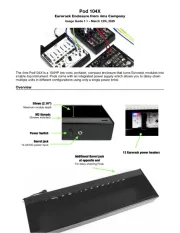
2 Augustus 2025

4 Mei 2024

3 Augustus 2023

3 Augustus 2023

24 Juni 2023

16 Juni 2023

16 Juni 2023

2 Juni 2023

19 Mei 2023

15 Mei 2023
Handleiding Niet gecategoriseerd
- Pro-Ject
- Qian
- Miditech
- Dension
- Suprema
- Fortinge
- Workzone
- Siedle
- Microlab
- PetRhein
- LECO
- Act
- Powerfix
- Ronco
- TeachLogic
Nieuwste handleidingen voor Niet gecategoriseerd
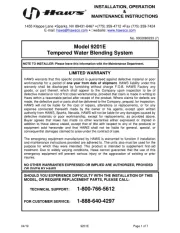
16 September 2025
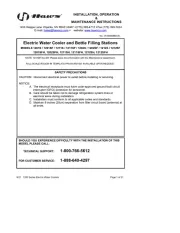
16 September 2025
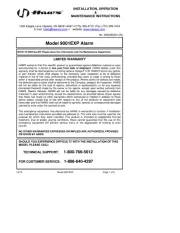
16 September 2025

16 September 2025
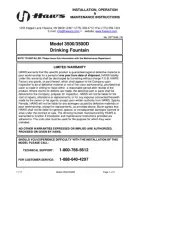
16 September 2025
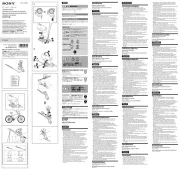
16 September 2025
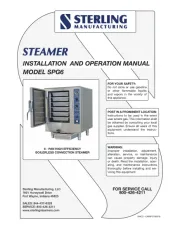
16 September 2025

16 September 2025
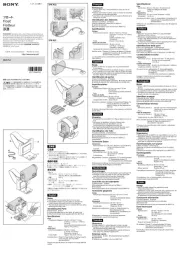
16 September 2025
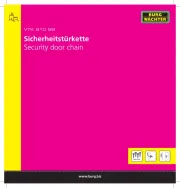
16 September 2025